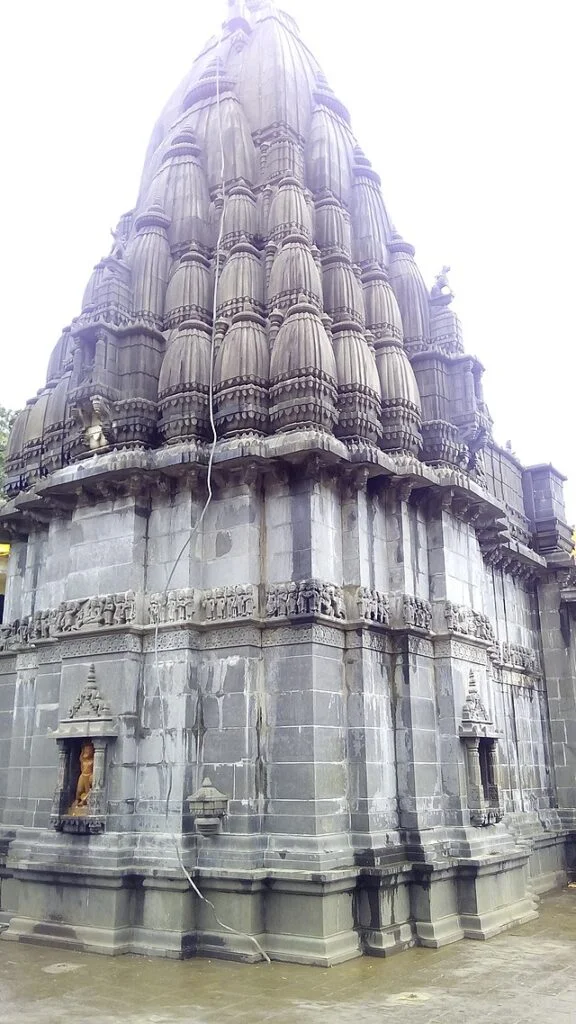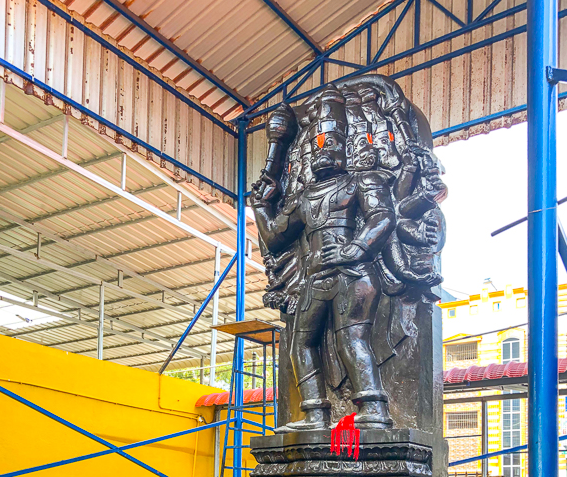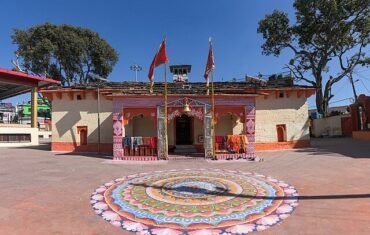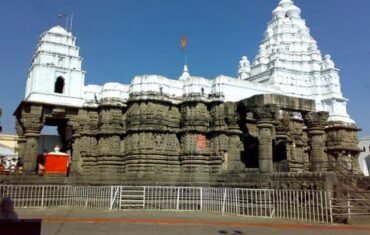Rameshwaram Jyotirlinga is a Hindu temple dedicated to Lord Shiva and is one of the twelve Jyotirlingas, shrines which are said to be the most sacred abodes of Shiva. The temple is located on the Pamban Island in the state of Tamil Nadu, India. The temple is also known for its ancient architecture, majestic towers, intricate carvings and corridors, making it a cultural marvel.
The main deity worshipped in the temple is in the form of lingam (an iconic symbol of Shiva). There are also idols of other deities such as Parvati, Ganesha, Murugan, Nandi and Hanuman. Other attractions in the temple include 22 Theerthams (holy water bodies), Agni Theertham (sea shore), Pamban Bridge (railway bridge) and Ram Sethu (bridge to Sri Lanka).
Location of Rameshwaram Jyotirlinga Temple
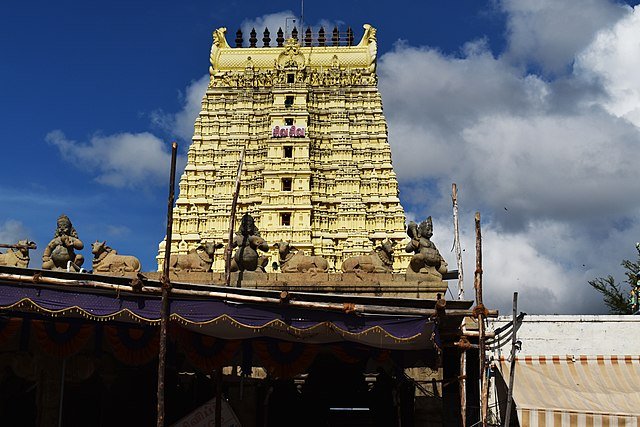
The Rameshwaram temple is about 570 km (354 mi) from Chennai city, which is well connected by flights, trains and buses from various cities in India. The temple can also be reached by road from nearby towns such as Madurai, Ramanathapuram and Tiruchirappalli. The temple is located on an island that is connected to the mainland by a road bridge and a railway bridge. The temple offers a splendid view of the Bay of Bengal and the Indian Ocean.
Timing of Rameshwaram Jyotirlinga Temple
The Rameshwaram temple is open for darshan (viewing) from 5 am to 9 pm every day. The temple has six aartis (rituals) daily: at 5 am, 6 am, 10 am, 12 pm, 6 pm and 8:30 pm. The temple also has a special aarti called Palliyarai Deepa Aarthi, which is performed at 9 pm using lamps and incense. This aarti is considered to be very sacred and serene, as it symbolizes the resting of Shiva and Parvati. The temple charges a nominal fee for entry and photography.
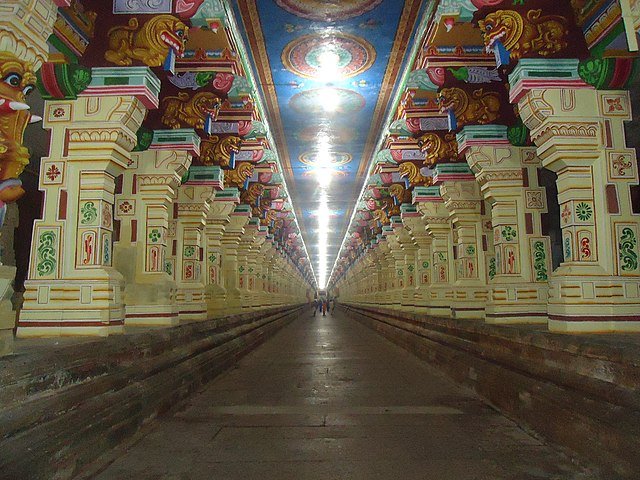
Rituals of Rameshwaram Jyotirlinga Temple
The Rameshwaram temple has various rituals and ceremonies that are performed by the priests and devotees throughout the year. Some of the main rituals are:
- Abhishek: This is the ritual of bathing the idol of Shiva with water, milk, honey, curd, ghee and other substances. This is done to express devotion and gratitude to Shiva and to seek his blessings. Devotees can perform abhishek by themselves or by booking online through the temple website.
- Rudrabhishek: This is a special abhishek that involves chanting the Rudram, a hymn from the Vedas that praises Shiva as the destroyer of evil and the source of all creation. This is done to invoke Shiva’s grace and protection from all kinds of troubles and calamities. Devotees can perform rudrabhishek by themselves or by booking online through the temple website.
- Mahapuja: This is a grand puja (worship) that involves offering various items such as flowers, fruits, sweets, clothes and ornaments to Shiva. This is done to express love and reverence to Shiva and to seek his fulfillment of all desires. Devotees can perform mahapuja by themselves or by booking online through the temple website.
- Pradakshina: This is the ritual of circumambulating (walking around) the temple in a clockwise direction. This is done to show respect and devotion to Shiva and to imbibe his positive energy and vibrations. Devotees can do pradakshina as many times as they wish.
Importance of Rameshwaram Jyotirlinga Temple

The Rameshwaram temple is considered one of the most important pilgrimage sites for Hindus, especially for Shaivites (followers of Shiva) and Vaishnavites (followers of Vishnu). The temple has a long and rich history, with evidence of its existence dating back to ancient times. The temple has been visited and praised by many saints, poets and kings, such as Adi Shankara, Nayanars, Alvars, Kamban, Thirumangai Alvar and Sethupathi kings.
The Rameshwaram temple is believed to be the place where Shiva manifested himself as a Jyotirlinga, a pillar of light, to prove his supremacy over other gods. The temple is also believed to be the place where Rama, the seventh avatar of Vishnu, worshipped Shiva as part of atonement for killing Ravana, the demon king of Lanka. The temple is also believed to be the place where Rama built a bridge to Lanka with the help of Hanuman and his army of monkeys. The temple is also believed to be the place where Rama and Sita returned to India after their victory over Ravana.
The Rameshwaram temple is a symbol of faith, power and devotion for millions of Hindus across the world. The temple attracts thousands of pilgrims and tourists every year, who come to seek the blessings of Shiva and to witness the beauty and history of the temple.
Significance of Rameshwaram Temple

The Rameshwaram temple has a great significance for Hindus, as it represents one of the aspects of Shiva, the supreme god of Hinduism. Shiva is known by many names and forms, such as Mahadev (the great god), Nataraj (the lord of dance), Rudra (the fierce one), Neelkanth (the blue-throated one), Bholenath (the simple one) and many more. Shiva is also known as Rameshwaram, which means “the lord of Rama” or “the lord of Ramnath”.
Rameshwaram is the aspect of Shiva that symbolizes mercy and forgiveness. He is the lord who pardons the sins of his devotees, who repent and worship him with sincerity. He is the lord who blesses his devotees with peace and happiness, who seek his refuge and guidance. He is the lord who protects his devotees from all kinds of dangers and enemies, who trust and surrender to him.
The Rameshwaram temple is dedicated to Shiva as Rameshwaram, who is worshipped as the giver of salvation, harmony and prosperity. The temple is also dedicated to Shiva as Jyotirlinga, which means “the linga (symbol) of light”. A Jyotirlinga is a representation of Shiva’s infinite power and presence, which can be seen and felt by his devotees. A Jyotirlinga is also a manifestation of Shiva’s grace and compassion, which can heal and transform his devotees.
The Rameshwaram temple is one of the twelve Jyotirlingas in India, which are considered to be the most sacred shrines of Shiva. Each Jyotirlinga has a different name and story associated with it, which reveals a different aspect of Shiva’s personality and attributes. By visiting and worshipping these Jyotirlingas, devotees can experience the various facets of Shiva’s glory and benevolence.
12 Jyotirlingas In India
Trimbakeshwar Temple: A Famous Spiritual Journey to the Abode of Lord Shiva
Trimbakeshwar Temple is one of the most sacred and ancient temples in India dedicated to…
Bhimashankar Jyotirling Temple: A Sacred and Scenic Destination
Bhimashankar Jyotirling Temple is a Hindu temple dedicated to Lord Shiva, one of the 12…
Omkareshwar Temple Omkareshwar: A Sacred and Scenic Jyotirlinga
Omkareshwar Temple is a Hindu temple dedicated to Shiva, located in Mandhata, nearby Khandwa city…
Mahakaleshwar Jyotirlinga, Ujjain: A Sacred and Ancient Temple of Lord Shiva
Mahakaleshwar Jyotirlinga is one of the 12 Jyotirlingas, or the most sacred shrines of Lord…
Grishneshwar Jyotirlinga Temple: A Sacred and Ancient Shrine of Lord Shiva
If you are a devotee of Lord Shiva and want to visit one of the…
Somnath Jyotirlinga: Famous Sacred and Ancient Temple of Lord Shiva
Somnath Jyotirlinga is one of the most revered and ancient temples dedicated to Lord Shiva…
Best Places to visit in Rameshwaram
Rameshwaram Jyotirlinga: A Holy and Historic Temple of Lord Shiva
Ram Setu: Famous Bridge of Faith and Wonder
Located in the picturesque island of Rameswaram, Ram Setu, also known as Adam’s Bridge, is…
Dhanushkodi Beach: Famous Serene and Sacred Destination
Located on the southeastern tip of Rameswaram Island, Dhanushkodi Beach is a breathtakingly beautiful destination…
Agni Teertham: Famous Sacred Destination of Purification
Located in the picturesque town of Rameswaram, Agni Teertham is a revered destination for Hindus,…
Panchmukhi Hanuman Temple: Best Symbol of Strength and Devotion
Located in the sacred town of Rameshwaram, Panchmukhi Hanuman Temple is a revered destination for…
A.P.J. Abdul Kalam House: Best Museum and Tribute to a Great Leader
Located in Rameshwaram, Tamil Nadu, the A.P.J. Abdul Kalam House is a museum and former…
FAQ’s
How to reach Rameshwaram temple?
The Rameshwaram temple can be reached by road, rail or air. The nearest airport is Madurai airport, which is about 174 km (108 mi) away from the temple. The nearest railway station is Rameshwaram railway station, which is about 1 km (0.6 mi) away from the temple. The temple can also be reached by road from nearby towns such as Madurai, Ramanathapuram and Tiruchirappalli.
When is the best time to visit Rameshwaram temple?
The best time to visit Rameshwaram temple is from October to March, when the weather is pleasant and comfortable. The temple can also be visited during festivals such as Mahashivaratri, Shravan Maas, Navratri and Diwali, when the temple is decorated and celebrated with great fervor and enthusiasm.
What are the other attractions near Rameshwaram temple?
There are many other attractions near Rameshwaram temple that can be explored by the visitors. Some of them are:
Agni Theertham: This is a sea shore that lies near the temple. It is considered to be a sacred place where pilgrims take a holy dip before entering the temple.
Pamban Bridge: This is a railway bridge that connects the island to the mainland. It is an engineering marvel that offers a scenic view of the sea and the island.
Ram Sethu: This is a bridge that connects India to Sri Lanka. It is believed to be built by Rama with the help of Hanuman and his army of monkeys.
Dhanushkodi: This is a ghost town that lies at the tip of the island. It was destroyed by a cyclone in 1964 and remains uninhabited since then.
Conclusion
The Rameshwaram Jyotirlinga is a holy and historic temple that showcases the power and devotion of Hinduism. The temple is a testimony of the faith and courage of the Hindus, who have preserved and maintained the temple despite several challenges and calamities.
The temple is a source of inspiration and solace for millions of pilgrims and tourists, who come to seek the blessings of Shiva and to witness the beauty and history of the temple. The Rameshwaram Jyotirlinga is not just a temple, but a living legend that embodies the spirit and essence of Hinduism.


